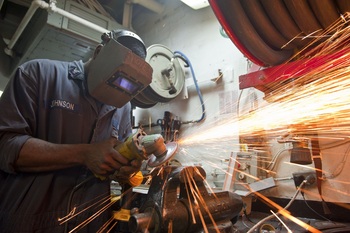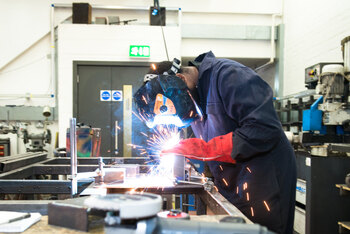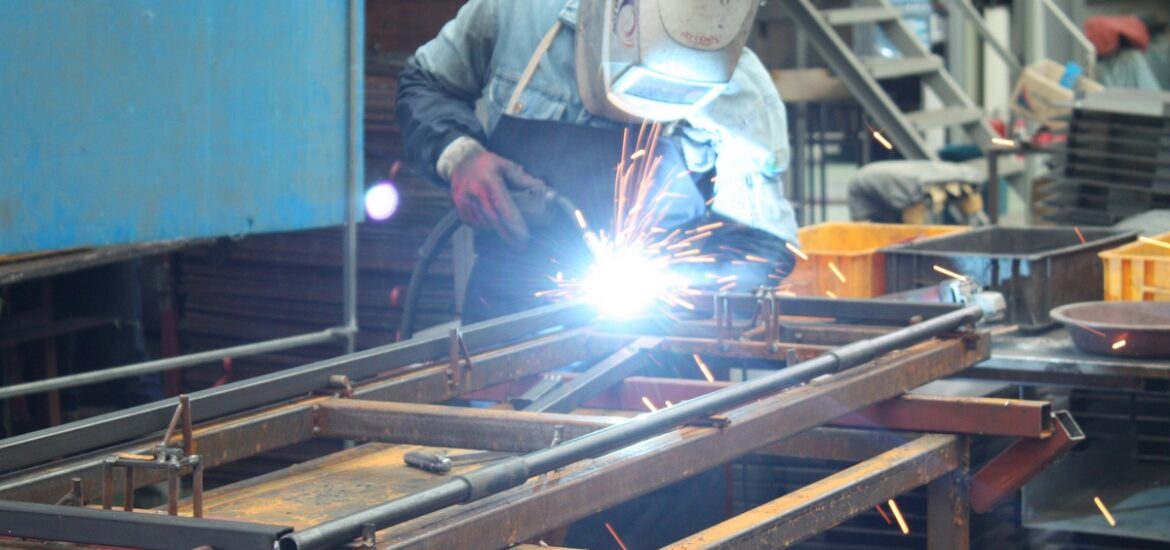In the world of manufacturing and construction, welding and fabrication play pivotal roles in bringing ideas to life. From building towering skyscrapers to crafting intricate metal sculptures, the processes of welding and fabrication are essential. In this comprehensive guide, we will explore the world of welding and fabrication, from the basics to advanced techniques, materials, and safety measures.
Understanding Welding and Fabrication
Welding and fabrication are two distinct but closely related processes that go hand in hand. They both involve working with metals and other materials to create structures and products. Let’s delve into each of these processes separately.
 Welding
Welding
Welding is the process of joining two or more pieces of metal together by melting them at their connection points and then allowing them to cool and solidify. The result is a strong and permanent bond between the pieces, often stronger than the base metal itself. Welding is used in various industries, including construction, automotive, aerospace, and even art.
Fabrication
Fabrication, on the other hand, encompasses a broader range of activities. It involves cutting, bending, shaping, and assembling metal and other materials to create a final product or structure. Fabrication may involve welding, but it also includes processes like machining, drilling, and finishing to achieve the desired shape and appearance.
Basic Welding Techniques
Arc Welding
Arc welding is one of the most common welding techniques. It uses an electric arc between an electrode and the base metal to create a weld. This method is versatile and can be used for various metals, including steel, aluminum, and stainless steel.
MIG Welding
MIG (Metal Inert Gas) welding is another widely used technique. It uses a continuous wire electrode and a shielding gas to protect the weld from atmospheric contamination. MIG welding is known for its speed and ease of use, making it suitable for both beginners and professionals.
TIG Welding
TIG (Tungsten Inert Gas) welding is a precise and clean welding method. It uses a non-consumable tungsten electrode and a separate filler material if needed. TIG welding is frequently recommended, for tasks requiring excellent, visually acceptable welds, such as in the food industry or creative endeavors.
Advanced Welding Techniques
Submerged Arc Welding (SAW)
SAW is an automated welding technique ideal for welding thick materials and long seams. It uses a granular flux to shield the arc and the weld from contaminants, resulting in high-quality, deep penetration welds.
Laser Welding
Laser welding is a precise and high-energy welding technology that melts and joins metals by using a concentrated laser beam. Because of its capacity to produce small, accurate welds with minimum heat distortion, it is widely employed in sectors like as electronics and aircraft.
Materials in Welding and Fabrication
The choice of materials in welding and fabrication depends on the specific requirements of the project. Here are some common materials used:
Steel
Steel is the most widely used material in welding and fabrication due to its strength, versatility, and affordability. It comes in various forms, such as mild steel, stainless steel, and high-strength alloy steel.
Aluminum
The low weight and corrosion resistance of aluminum are well recognized. In industries like aerospace and car manufacturing, it is widely used.
Stainless Steel
Stainless steel offers excellent resistance to corrosion and is often used in applications requiring hygiene and durability, such as in the food and pharmaceutical industries.
Copper
Copper is valued for its electrical conductivity and is used in electrical and electronic applications. It is also an essential material in plumbing and HVAC systems.
Safety Measures in Welding and Fabrication
Safety should always be a top priority when working with welding and fabrication processes. Here are some crucial safety measures to follow:
Personal Protective Equipment (PPE)
Always wear appropriate PPE, including welding helmets with auto-darkening lenses, welding gloves, flame-resistant clothing, and safety glasses. PPE helps protect you from sparks, UV radiation, and hot metal.
Ventilation and Respiratory Protection
Ensure proper ventilation in the workspace to remove welding fumes and gases. Use respiratory protection, such as respirators, to avoid breathing dangerous chemicals when required.
Fire Safety
Keep a fire extinguisher nearby, and be aware of fire hazards. Welding and fabrication involve high heat, which can pose a fire risk. Maintain a clean and clutter-free workspace to minimize potential hazards.
Training and Certification
Proper training and certification are essential for anyone involved in welding and fabrication. Knowing how to operate equipment safely and understanding welding techniques are crucial for accident prevention.
The Art of Fabrication
Fabrication is more than just assembling pieces of metal; it’s an art form. Skilled fabricators can turn raw materials into intricate and functional structures. Here are some aspects of the art of fabrication:
 Precision and Attention to Detail
Precision and Attention to Detail
Fabricators must have an eye for detail and precision. They often work with tight tolerances to ensure that the final product meets the required specifications.
Customization
Fabrication allows for a high degree of customization. Whether it’s creating a unique piece of furniture or a custom-made vehicle part, fabricators can bring clients’ ideas to life.
Problem-Solving
Fabrication often involves creative problem-solving. Fabricators must find innovative solutions to challenges that arise during the fabrication process.
Conclusion
Welding and fabrication are indispensable processes in the world of manufacturing and construction. From the basics of welding techniques to the artistry of fabrication, these processes bring ideas to fruition, shaping the world around us. Whether you’re a novice looking to learn the ropes or an experienced professional seeking to hone your skills, mastering the art of welding and fabrication is a journey worth embarking on. Please remember that safety comes first, and with perseverance and practice, you can design extraordinary goods and buildings that last the test of time.

